Arenskjold Antiques Art in Hudson: A Magical Destination for the Old & Glorious
By Joan Vos MacDonald | Winter 2023 | The Source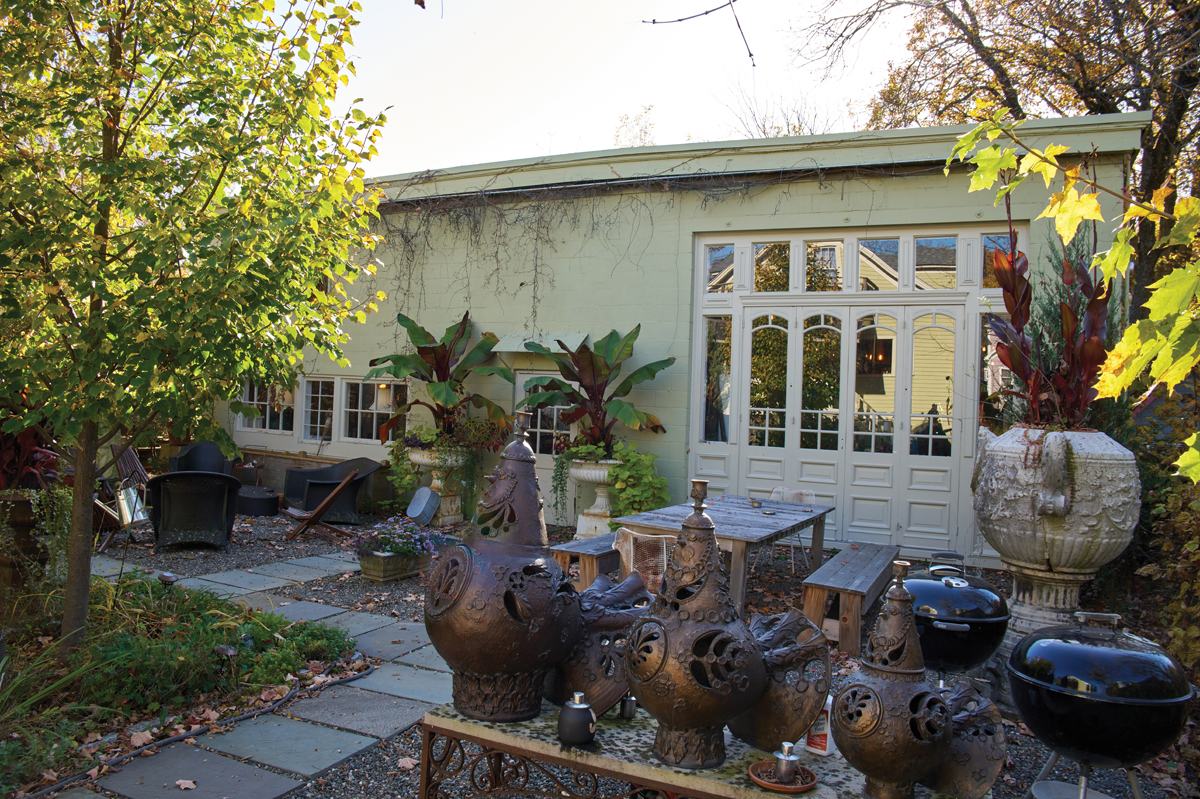
The profusion of art and fine furniture crowding the floors of Arenskjold Antiques Art in Hudson has long made it a fun place to shop, but Kim Arenskjold and his business partner Wlodek Malowanczyck noticed that sometimes, amid the abundance of choices, some of their rarer pieces did not quite get the attention they deserved. To remedy this, the dealers renovated a former boathouse, transforming it into a one-of-a-kind gallery/showroom space only a short walk from their store on Warren Street.
The new space is remarkable for several reasons, the first being how it’s hidden on a residential block of Union Street. Located discreetly behind a modest home, the 2,000-square foot building has enough room to allow Malowanczyck and Arenskjold’s favorite finds to be lovingly displayed. With enough viewing space, visitors can indulge in all the details and craftsmanship that make these rare pieces noteworthy.
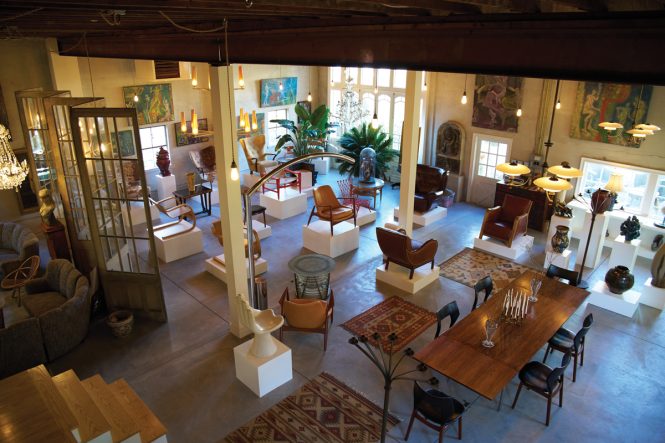
The showroom’s diverse collection contains pieces that reflect both Malowanczyk’s modern sensibility and Arenskjold’s penchant for collecting older pieces.
“We put special pieces in here,” says Arenskjold. “They are definitely pieces for a clientele that has an understanding of the period and of the pieces and their rarity. The idea is to bring these rare pieces out of the store and put them on a pedestal. They look different here than seeing them in the store.”
Modern Times
The eclectic mix of finds includes a golden multi-headed sculpture by the Mexican surrealist designer and artist Pedro Friedeberg, as well as one of his iconic hand chairs, an example of which is also found in the Museum of Modern Art. Friedeberg is a favorite of antiques dealer Malowanczyck. “I was always fascinated by his work,” says Malowanczyck. “I went to Mexico City several times and studied his artworks in Mexico. He really appealed to me. This is one of his largest pieces of sculpture that we acquired here in Hudson from a collector.”
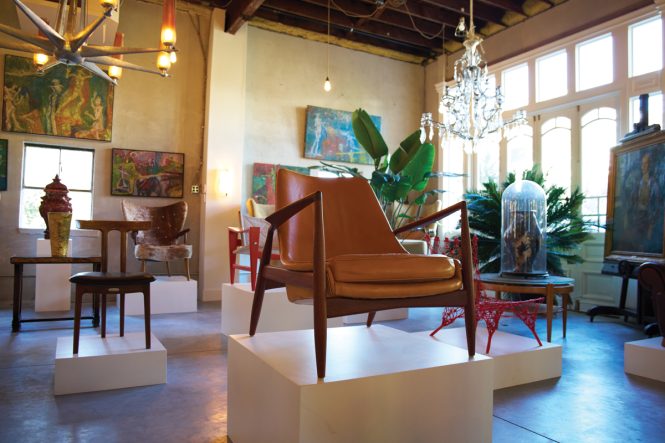
A room of chairs.
The inventory also includes two luxuriously restored chairs by Danish cabinet maker Frits Henningsen, as well as two chairs that Finnish architect Alvar Aalto designed for a sanatorium in 1933. There’s also a diminutive children’s chair by American designer and architect Charles Eames. “This little chair, one of my favorite pieces, was designed by Eames in 1945,” says Malowanczyck. “Before all his fame, he designed several pieces for children, including this chair. He did the stool and he did the table. And then he made a little elephant. He wasn’t so successful then.”
Another rare find that gets a well-deserved spotlight is a dining chair designed by architect Rudolph Schindler, an Austrian-born architect associated with the modernist movement. Schindler’s chairs are highly collectible, and not easy to find.
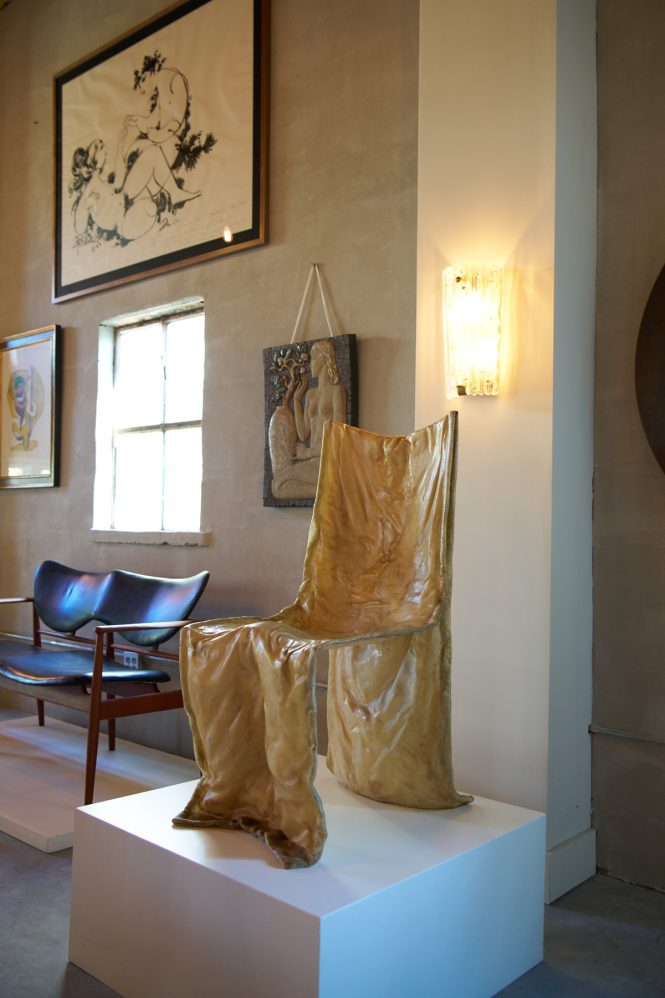
“He became one of the American architects that established the modern look that is today called California Modern,” says Malowanczyck. “And he never put his furniture into production. So the pieces were only designed for the particular project. You can’t go and buy another one.”
The display is aimed at the discerning designer or customer, definitely not someone looking for a bargain. For example, a rare Victorian hand-painted globe with a map of Mars, created by Danish astronomer Emmy Ingeborg Brun, goes for $50,000. “Supposedly there are only about seven or eight of them in the whole world,” says Arenskjold. “And three or four of them are basically in museums and collections. They’re extremely rare.”
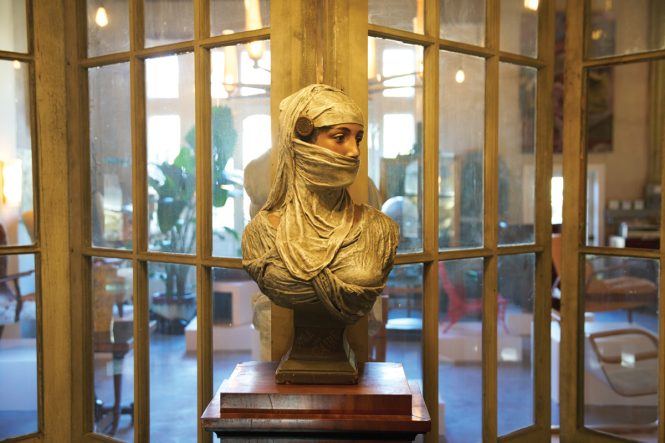
19th-century plaster bust.
Something Vintage, Something Modern
For Malowanczyck, the period after World War II was the most exciting period for art and design, and that’s reflected in the pieces he collects. “It was the postwar era with Picasso and Frank Lloyd Wright,” says Malowanczyck. “It was a booming time. When I moved from Denmark to the US I became a dealer for 20th-century antiques only, specializing in pieces designed by architects or some famous designers. Kim still likes old paintings and pieces. He still likes mixing between the old world and the 20th-century world. Mixing pieces makes sense, in that you have a chair from 1930 and it provides a kind of a transition from the old world to the new one. And it goes really nicely together.”
It’s a diverse mix, but somehow harmonious. “Wlodek has been focusing a lot more on 20th-century design, designed by architects and name brand stuff from the 20th-century, where I’m a little more all over the place,” says Arenskjold, who also favors classical marble statues and Victorian furniture. “I mean, I do that too, but maybe I sometimes favor older pieces. It’s a good combination.”
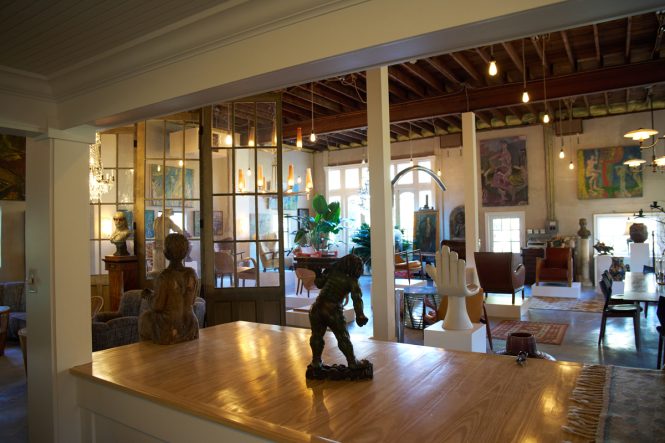
Old Friends
That can also be said of the two dealers who have been friends since they were young adults in Denmark. “Kim and I met when we were around 20,” says Malowanczyck, “So it was just about 50 years ago.”
Malowanczyck and Arenskjold were introduced to the antiques business because of a mutual friend whose mother was a respected antiques dealer. They began by making deliveries and learned about antiques along the way. Both men opened businesses in Denmark and then life took them in different directions. Later, Malowanczyck had businesses in Dallas and Laguna Beach before heading to the Hudson Valley.
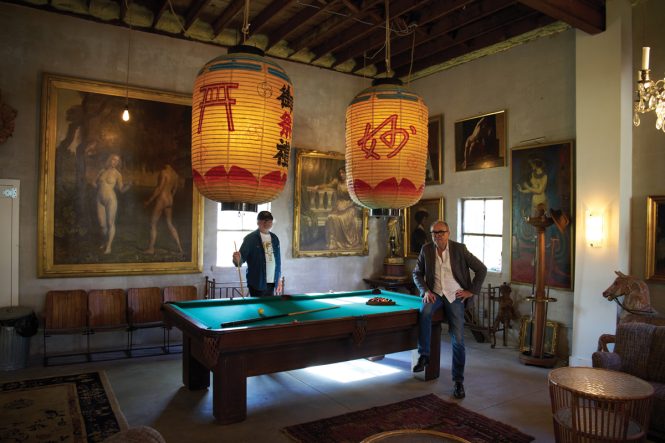
Malowanczyck and Arenskjold in the showroom
Arneskjold opened shops in Houston, then returned to Copenhagen, before deciding to move back to the US to open a shop in New York City. That required more rent money than he cared to invest, so he traveled north and opened a shop in Rhinebeck.
But the amount of space available for the price in Hudson was appealing. “Back then, there were three or four antique dealers here,” says Arenskjold of Hudson in the 1980s. “Hudson had a really bad reputation, and the buildings back then sold for nothing. We saw a building on Warren Street, which was for sale for, like, $120,000, and we bought it for $105,000, which I think was the highest price paid for a building on Warren Street back then. Slowly Hudson became a destination for people looking for antiques.”
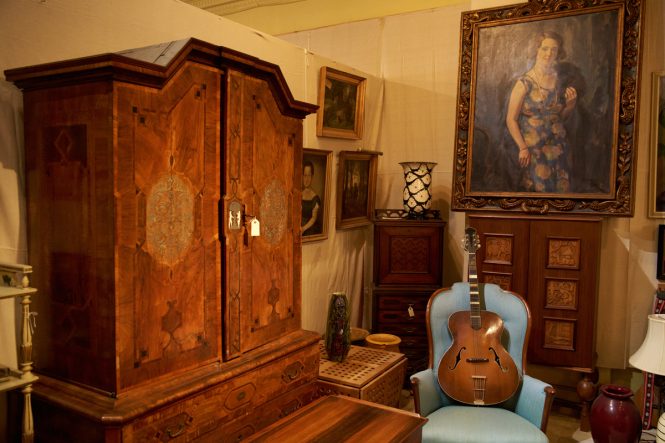
For a few decades, Arenskjold ran the store with his wife and business partner, Jennifer. When she retired a few years ago, it coincided with Malowanczyck looking for a change, so Arenskjold suggested he move up to the Hudson Valley. They now work in what they describe as a “semi-partnership,” as independent dealers that buy and sell primarily furniture imported from Denmark, Sweden, Finland, and Italy.
The dealers renovated the space with the idea of holding exhibits and events there, but the design also factored in footage for the old friends to hang out in, as they have been doing off and on for half a century. There’s a comfortable section in the corner of the gallery, with a large pool table over which two six-foot-high Chinese paper shades hang.
“It is kind of a memory of the old days where we were in Copenhagen,” says Malowanczyck. “Kim was very good at playing pool and I was very good at drinking beer at the time. With that it really came together nicely, the whole project for fixing this space up.”
A friendship that long is also a rare find.
